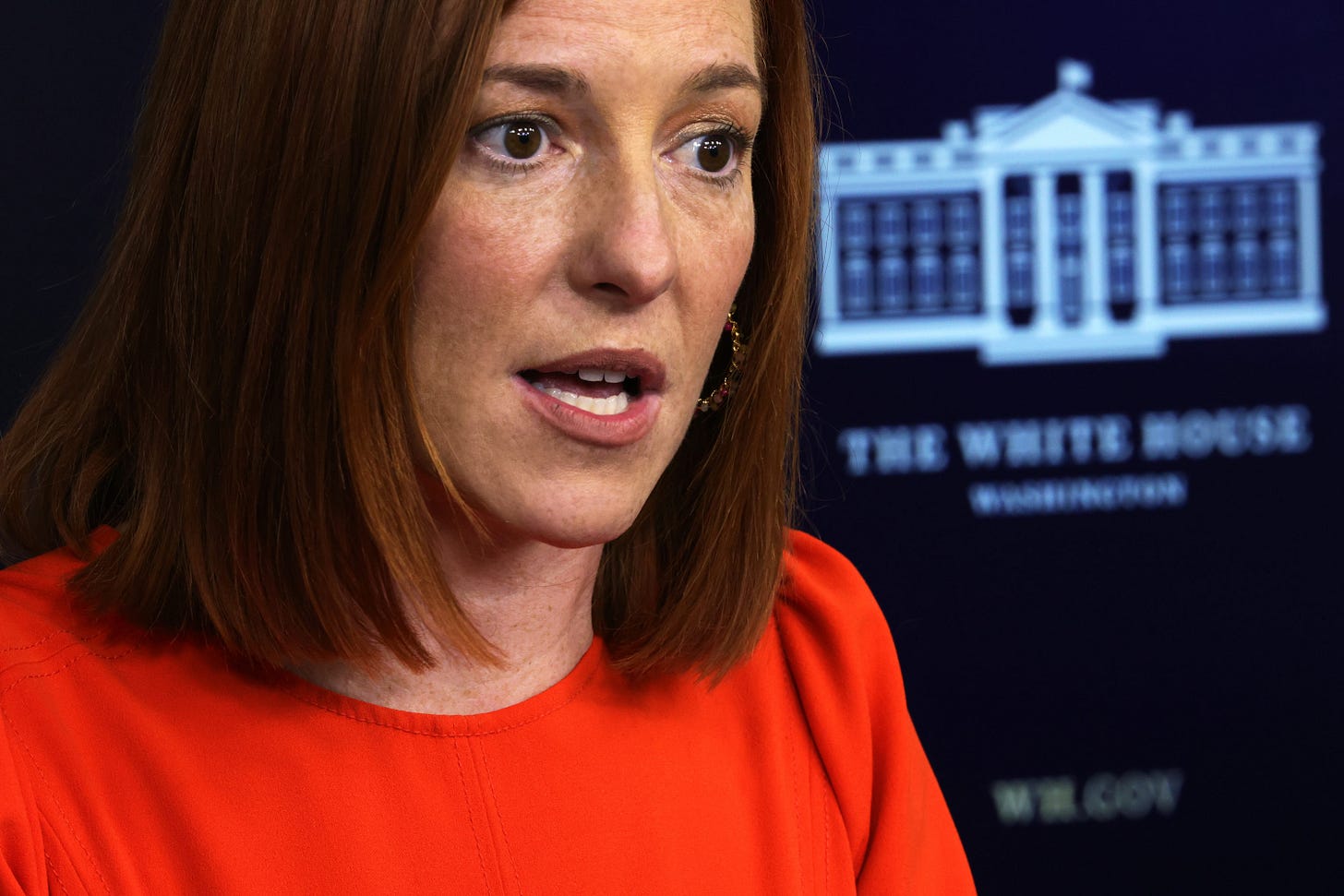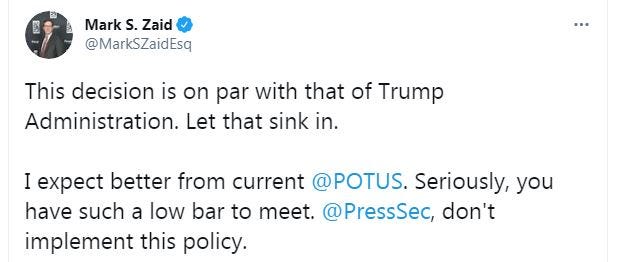The Biden White House vs. the Press
New policy discriminates against small outlets and limits coverage of the administration.

On Monday, White House Press Secretary Jen Psaki made it clear that the United States will not issue sanctions on Saudi Arabia or hold its crown prince accountable for the murder of Washington Post columnist Jamal Khashoggi. This was an unwelcome decision—suggesting the Biden administration is not as committed to the free press as it claims.
But while the decision to let Saudi Arabia get away with the Khashoggi murder got a lot of attention, another announcement from the administration concerning its relationship with the press did not.
Last Friday the administration announced that, beginning this week, it would adopt rules to make life harder on independent reporters. The new rules require them to jump through two hoops in order to be allowed into the White House—and even then they still won’t have the ability to ask questions in a briefing. The first hoop is a lottery which randomly awards permission to visit the campus to reporters who cover the White House but aren’t in the pool or don’t have a briefing seat. The second hoop is a $170 fee that must be paid after winning the lottery. Ostensibly this fee is to cover the cost of a COVID test—though the administration says reporters can also supply a copy of a privately taken test to show they are safe and avoid the $170 fee the White House plans to charge you. But the effect is the creation of a tax for independent reporters. It is a “pay-for-play” rule that should not be allowed in the world of journalism.
The new rule has but one effect: It limits coverage of the Biden administration. The new regulation favors large corporate media companies—which, though best equipped to pay for testing and thus attendance, are exempt from having to do so. (The White House will still pay for those reporters to be tested.) The outlets being hurt are those which will have the hardest time paying for testing—the smaller publications, the independent publications, small foreign bureaus, and freelancers. It’s simple discrimination. (For the record, I am among those who have to be tested and pay.)
The White House told the White House Correspondents Association (WHCA) that the change was being made for budgetary reasons. This explanation is at odds with reality. If the budget were the problem, the White House wouldn’t exempt those who send the largest staffs—like major networks, wire services, and national newspapers. If saving money were the goal, the White House could save a lot more of it by requiring the large corporations to pay for testing and exempting the smaller ones.
The message to media organizations is unmistakable: The administration is telling the WHCA to play ball or they’ll be cut out. And the WHCA was intimidated enough to go along with it.
The Biden administration follows the most anti-press White House in modern history. The former president called journalists “enemies of the people” and purveyors of “fake news,” and often singled reporters out for abuse at rallies—with the not-so-subtle threat being that the mob might come for them.
So far, Jen Psaki and the current communication staff have cleared that bar. But one deputy press secretary has already resigned after saying he would “destroy” a reporter doing her job. Meanwhile, talk to reporters in the briefing room and those with access give Psaki high marks for politeness and cordiality, but those who have not been able to get an email or phone call returned and have little to no chance of attending a briefing say she is patronizing and evasive. And remember: Because of pandemic restrictions, Psaki has not yet faced a full briefing room. It’s a lot easier to handle 14 reporters than 70.
First Amendment attorney Ted Boutrous said in a tweet that the Biden White House must do better:
And attorney Mark Zaid, who sued the Trump administration and has been an advocate for transparency through Democratic and Republican administrations, also condemned the action of charging reporters to enter the White House:
Psaki told me on her first day at the White House that she wanted “a lot more” reporters covering the president—if it weren’t for the pandemic. But if that were true, then the administration wouldn’t enact rules that further restrict the press. If the administration wanted more reporters covering the president it could make that happen by:
Vaccinating the reporters who have hard passes (this would be far cheaper than testing people every day);
Conducting briefings in the South Court Auditorium in the EEOB.
Demanding that, during the pandemic, all reporters circulate through the briefing, not just those who are in the pool and own a seat.
Zaid was right, this move by Biden is the sort of thing that Trump might have done.
As it turns out, the Biden people may be no more friendly toward the working press than Trump—only much more high-handed in their approach. Trump was a wooden mallet in a clenched fist, but we may soon think of the Biden team as a stiletto hiding in a velvet glove.





